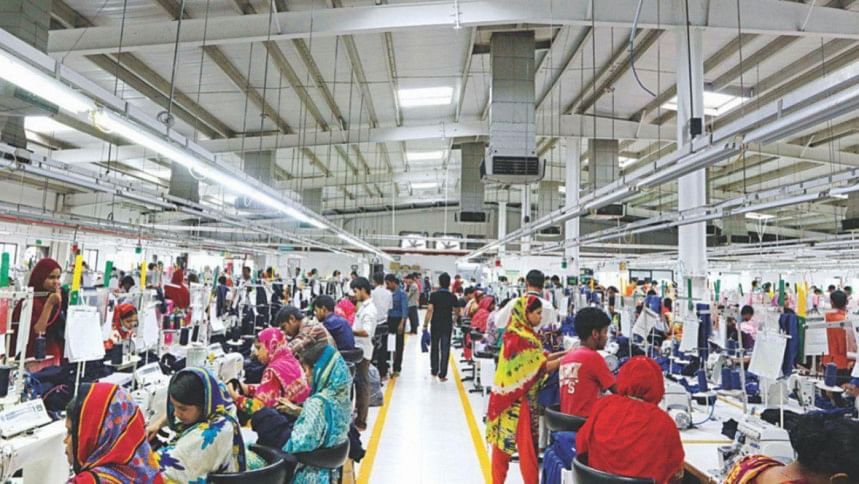How garment manufacturers can cut costs

In an ever-evolving and competitive global market, garment manufacturers should constantly challenge themselves to find innovative ways to reduce costs without compromising on quality and efficiency. Rising production expenses, fluctuating raw material prices, and increased competition make cost reduction imperative for sustainable business growth. There are several actionable strategies manufacturers can adopt to streamline operations and reduce their cost base.
In recent years, sustainability has become more than just a buzzword; it's a business imperative. Garment manufacturers can significantly reduce costs by adopting sustainable practices throughout their supply chain. Sustainable initiatives not only contribute to environmental well-being, but also result in long-term cost savings. Some key actions include switching to sustainable and cost-effective materials, such as organic cotton, recycled polyester and other eco-friendly alternatives, to reduce raw material costs and appeal to environmentally conscious consumers.
Implementing energy-efficient technologies and practices can also lead to substantial cost-cutting. Investing in modern machinery with lower energy consumption and optimising production schedules to minimise energy usage during off-peak hours are effective strategies. Likewise, minimising waste in the production process not only aligns with sustainable principles, but also cuts down on material costs. Manufacturers can implement lean manufacturing techniques, recycle waste materials, and optimise cutting patterns to reduce fabric wastage. Key principles of lean manufacturing include continuous improvement whereby employees are empowered to identify and suggest solutions to streamline processes. This includes the regular review and updating of manufacturing practices to enhance efficiency.
Lean manufacturing also involves adopting just-in-time inventory practices to minimise storage costs and reduce the risk of overproduction. This strategy helps maintain a lean and agile supply chain, ensuring that materials are used efficiently without excess stock.
Production flow optimisation, meanwhile, sees the analysis and optimisation of the flow of production by eliminating bottlenecks and implementing efficient layouts. This can enhance the overall productivity of the manufacturing process, reducing lead times and costs.
Cross-training employees on multiple tasks enables flexibility in workforce allocation. This approach maximises efficiency without the need for excessive staffing levels.
Another way to cut costs is through embracing technology and automation. The adoption of technology and automation is a game-changer for garment manufacturers looking to reduce costs and enhance efficiency. While the initial investment might be significant, the long-term benefits are substantial.
Some ways to leverage technology include use of advanced manufacturing technologies. Many leading players are now investing in state-of-the-art machinery and equipment that can significantly improve productivity and reduce labour costs. Automated cutting machines, robotics, and computerised sewing machines can enhance precision and efficiency.
Or how about utilising data analytics tools to analyse market trends and forecast demand accurately? This ensures that production aligns with actual market needs, preventing overproduction and unnecessary costs.
Meanwhile, enterprise resource planning (ERP) systems can streamline various business processes, from inventory management to order processing. This integration enhances communication and coordination across departments, reducing errors and delays. Manufacturers can also embrace digital prototyping tools to reduce the time and costs associated with traditional sample development. This not only accelerates the design process, but also cuts material wastage.
Collaborative relationships with suppliers can also yield significant cost savings for garment manufacturers. Building strong partnerships with reliable suppliers helps in negotiating favourable terms, optimising logistics, and ensuring a steady supply of high-quality materials. Key strategies include establishing long-term relationships with suppliers and negotiating mutually beneficial contracts. Long-term commitments can lead to better pricing and more favourable terms, providing stability for both parties. Progressive manufacturers also look to work closely with suppliers to identify opportunities for joint cost reduction. This may involve collaborating on product innovation, process improvements or logistics optimisation.
Manufacturers should look to optimise the supply chain by improving logistics and transportation efficiency. Consolidate shipments, negotiate favourable freight rates, and explore alternative transportation modes to reduce costs. Also seek to develop risk mitigation strategies in collaboration with suppliers to address potential disruptions in the supply chain. This includes diversifying suppliers and maintaining contingency plans for unforeseen events.
While cost reduction is essential, it should not come at the expense of product quality. In fact, ensuring high-quality products can lead to long-term cost savings by reducing returns, rework, and warranty claims. Implementing robust quality control measures can have a positive impact on both customer satisfaction and the bottom line. Manufacturers should also invest in continuous training programmes to ensure employees are well-equipped to maintain high-quality standards. Well-trained staff are more likely to produce error-free products, reducing the need for rework and improving overall efficiency.
Factory owners should also establish feedback loops with customers to gather insights on product quality and identify areas for improvement. This proactive approach allows manufacturers to address issues promptly and enhance product quality over time.
Finally, owners should adopt robust quality management systems (QMS) to standardise processes, monitor performance, and continuously improve quality. Certification under international quality standards can enhance credibility and market competitiveness.
In the competitive landscape of garment manufacturing, cost reduction is crucial for sustainable growth and to underpin better wages for garment workers, which is something we all want. By embracing sustainable practices, implementing lean manufacturing principles, leveraging technology, collaborating with suppliers, and prioritising quality control, garment manufacturers can strategically reduce their cost base while maintaining or even improving product quality. These actions contribute to the financial health of the business and also position manufacturers to thrive in a dynamic and challenging global market.
Mostafiz Uddin is the managing director of Denim Expert Limited. He is also the founder and CEO of Bangladesh Denim Expo and Bangladesh Apparel Exchange (BAE).
Views expressed in this article are the author's own.
Follow The Daily Star Opinion on Facebook for the latest opinions, commentaries and analyses by experts and professionals. To contribute your article or letter to The Daily Star Opinion, see our guidelines for submission.


 For all latest news, follow The Daily Star's Google News channel.
For all latest news, follow The Daily Star's Google News channel. 












Comments